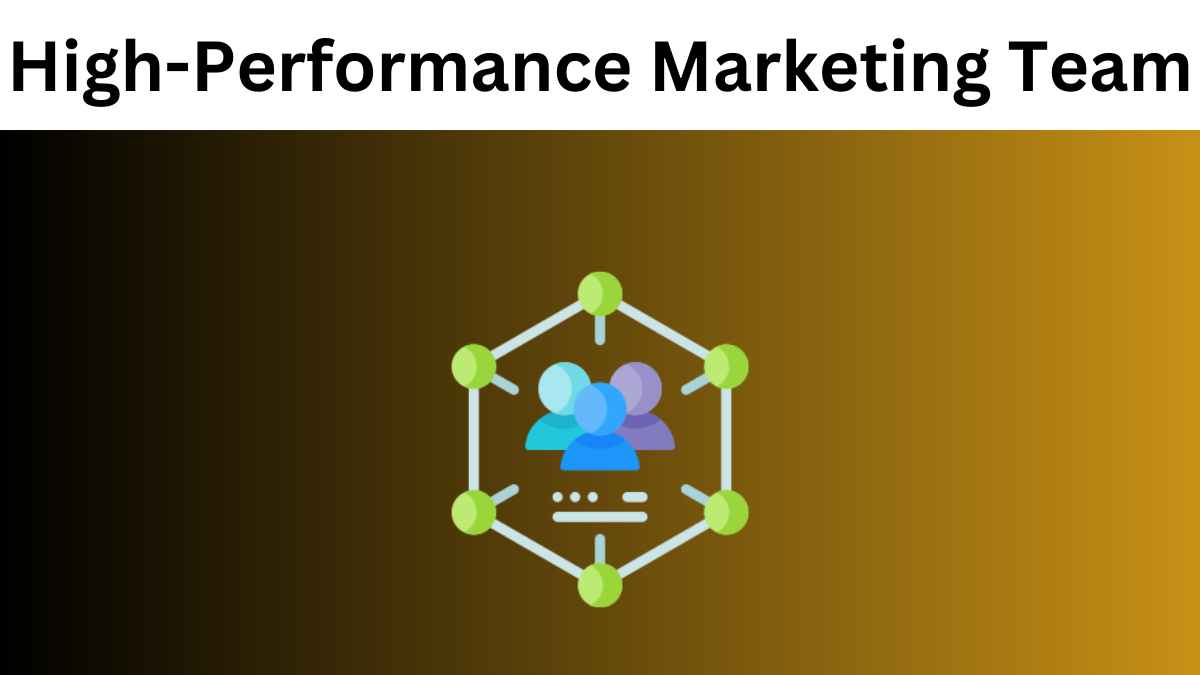Imagine you’re in a boat, drifting in the vast ocean of business competition. Despite all your efforts, the wind of market trends seems to be against you. You’re not reaching your destination—the goals you set for your business.
The problem? You’re lacking a robust, well-structured sailor—your marketing team.
Building a high-performance marketing team is vital for your business. In fact, a report shows that employees working in teams have 19% more sales and 7% more customer engagement than those working in silos.
This specialized group is your key to unlocking tremendous growth potential, navigating market shifts, and ultimately driving sustainable success.
7 Ways to Build a High-Performance Marketing Team
In this article, we will explore some key steps to building a high-performance marketing team that brings in more rewards for your business.
Understanding Your Marketing Needs
Before you can build a topnotch marketing team, you need to understand your needs and outline the necessary goals you aim to achieve.
You need to be sure if you want to boost your brand’s awareness. Or maybe you want to boost sales or generate more leads and sales. These goals will guide your marketing strategies and the skills you need in your team.
Next, identify your target audience and market. Who are your potential prospects? Figure out their needs, pain points, and jobs-to-be-done.
Designing Your Marketing Team Structure

Once you have a clear understanding of your marketing needs, you can start designing your team structure. Traditional marketing structures often separate team members by function (e.g., advertising, PR, digital), while modern structures may be more integrated, with team members working collaboratively on multi-channel campaigns.
Consider the roles you need in your team. You might need integrated marketing strategies to oversee strategy, marketing specialists to execute tasks, and data analysts to track performance. You should ensure there’s no redundant space allocated since that can take an unnecessary toll on your capital and effort.
Afterward, create a working hierachy for your expected team members to ensure smooth workflow. Also, create an hierarchical structure for your team. Every member should know who they are reporting and accountable to. For example, you could have functional specialists working under generalist managers, with everyone collaborating on integrated campaigns.
Implementing Effective Workflows In Project Management
Ensuring efficient workflow in project management is a key part of a high-performance marketing team. By streamlining your work process, you can easily eliminate silos and possible team errors.
For instance, a social media workflow might involve brainstorming post ideas, creating content, scheduling posts, and monitoring engagement. Task management tools can measure and optimize these to ensure the whole team is involved.
Remember, your project management approach plays a critical role in coordinating these workflows. A good project manager will ensure that tasks are completed on time and resources are used effectively, keeping your marketing operations running smoothly.
Attracting the Right Talent
Craft effective job postings and source candidates strategically. Make sure your job descriptions accurately describe the role and the skills needed. Where you post your job also matters, as many job boards can vary in terms of the number of candidates you can get as highlighted in this study on the performance of job boards by Manatal. Use job board, LinkedIn, and industry events to find potential candidates.
When evaluating candidates, consider both skills and culture fit. You need people with the right technical abilities, but they should also share your company’s values and work well with the rest of the team.
Diversity is also critical to a high-performance marketing team. It gives you a wide access into the inexhaustible talent pool regardless of nationality and even location, especially now that remote working is gaining more traction
Hiring the Right People

Source: pexels
Conducting effective interviews is an art. Ask questions that give candidates the opportunity to demonstrate their skills and show how they approach problems. Look for evidence of strategic thinking, creativity, and teamwork.
When assessing candidates’ skill sets, consider both their current abilities and their growth potential. Use practical tasks or tests to get a sense of their working style and proficiency.
Finally, make a competitive offer to secure the best talent. Consider salary, benefits, flexible working arrangements, and opportunities for professional development. Remember, the right people are an investment in your business’s future success.
Onboarding and Training
A proper onboarding process can set new hires up for success. According to a study by Northpass, 77% of employees that undergo proper onboarding and training achieve expected performance scores more than those who don’t.
Introduce them to your company culture, explain the team structure and workflows, and provide any necessary training. An effective onboarding experience can boost productivity and engagement from the start.
Make training an ongoing process. Of course, the frequency will depend on your capital and other expenses. You should also use diverse training methods, such as organizing workshops, granting free access to premium courses, learning on the job with an expert, ebooks, and more.
It is also important to encourage holistic team collaboration instead of the traditional silos approach. This in turn improves team efficiency and provides a sturdy ground for implementing agile methodology.
Maintaining Team Performance and Morale
Maintaining the performance and morale of your team is as crucial as building it. Regularly assess the team’s performance against set goals and metrics. You should also pay attention to areas where each member is lacking through the data analyzed and propose quick solutions.
Another crucial point to keep in mind is inclusivity. Most team members feel reluctant to share their ideas for the fear of being turned down or criticized. In order to build dedicated and loyal employees, you must ensure everyone’s voice counts.
Recognize and reward hard work and success. This could be through formal recognition programs, bonuses, or simply verbal acknowledgment in meetings. Consider personalizing rewards with meaningful gestures, such as customized Canvas Photo Prints to show appreciation for team members’ dedication. Remember, appreciation can go a long way in boosting morale and motivation.
Finally, prevent burnout by encouraging work-life balance, offering flexible working conditions, or providing resources for stress management. A healthy, happy team will be more productive and committed to your business’s success.
Conclusion
Building a high-performance marketing team requires careful planning, from understanding your marketing needs to designing your team structure, attracting and hiring the right people, and implementing effective workflows and project management.
Remember, your team is a crucial investment – by fostering an environment of continuous learning and collaboration, you will position your business for long-term success.

